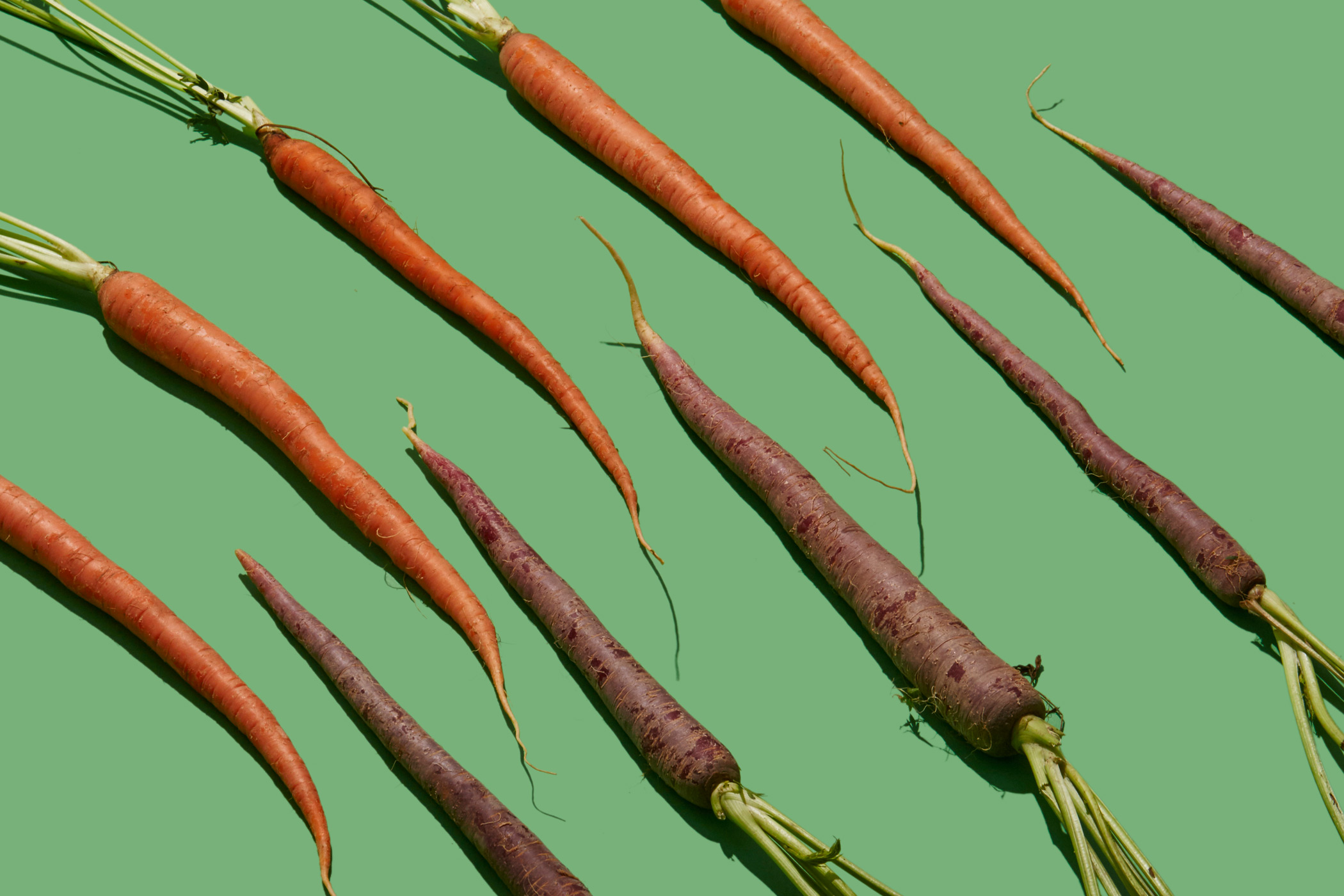
If you’ve ever opened your refrigerator’s vegetable drawer and noticed mushy, moldy produce, you’re not alone. About 40 percent of the food that’s grown and sold in America is thrown out, according to the Natural Resources Defense Council. Not only can wasting food weigh on your conscience, but it can also drain your cash.
To save money on groceries, cut back on food waste and ensure that you’ll always have nutritious produce on hand for a healthy dinner, stock up on the veggies below. All of them last at least a month and many of them remain good far longer than that.
1. Pumpkins
So long as you don’t carve it into a jack-o-lantern, fresh pumpkins can last up to four months in the refrigerator. No room in the fridge? The orange squash will last up to three months on your kitchen counter or inside a cool, dark pantry, which is still pretty impressive.
Eat This! Tip: We’re big fans of roasting pumpkin in the oven with a bit of olive oil, salt, pepper and cumin. Eat it hot as a side dish or chill it and add it to a salad for a major hit of vitamin A.
2. Beets
Good news, beet lovers: Your favorite carpet-staining veggie can last between two and four months when stored in the fridge. Just be sure to cut off the greens if they’re still attached. Keeping them on will draw the moisture out from the root, which, over time, can impact the flavor, draw out the nutrients and cause the vegetable to shrivel up.
Eat This! Tip: Nosh on beets before you go for a jog. Studies suggest that runners who eat baked beets before a race actually finish faster. The secret weapon: Nitrates, a natural chemical that increases endurance and lowers blood pressure.
Eat This, Not That!: 20 Healthy Foods You Better Eat in Moderation
3. Sweet Potatoes
Sweet potatoes are high in fiber and have a low glycemic index, which means they’re digested slowly and will keep you feeling satiated long after your meal. If you store your sweet potatoes in a cool, dark area, you can expect them to last up to a month. Keep them in a loose bag to allow for optimal circulation and freshness.
Eat This! Tip: These orange tubers are extremely versatile and can be used to make everything from fries to soup.
4. Cabbage
Cabbage has a far lower water content than traditional greens like spinach and romaine, which helps to extend its shelf life. Wrapped in plastic and stored in the refrigerator, the brassica vegetable can last for about two months.
Eat This! Tip: Heat breaks down the chemicals that give cabbage many of its nutritional superpowers so it best to enjoy it raw. Throw it into a salad or use it to beef up a sandwich.
Eat This, Not That!: 25 Ways to Use Almost-Spoiled Food
5. Spaghetti Squash
This stringy, high-fiber squash can stay fresh for up to five weeks so long as you store it properly. A dry environment that’s between 50º to 55º F is ideal.
Eat This! Tip: Swap out your carb-laden pasta for spaghetti squash. Doing so will save you a whopping 180 calories a cup and the squash’s potassium content will do your muscles a solid, just like these 9 other High-Potassium Foods That Keep Your Muscles Healthy and Strong.
6. Carrots
Instead of buying baby carrots, which tend to go bad rather quickly, pick up the full-sized variety, which are one of the cheapest vegetables for weight loss. If they’re sold in a plastic bag, place a paper towel inside of it to absorb any lingering moisture and replace it whenever it gets saturated. Since moisture accelerates rot, this tactic can keep the orange veggie fresh and crunchy for months.
Eat This! Tip: There’s really no wrong way to eat a carrot. Throw some into a stew or pasta salad, or bake with some olive oil and rosemary. In need of a snack? Pair carrots with some fiber-rich hummus to take the edge off.
Eat This, Not That!: 20 Protein-Packed Vegetarian Meals
7. Onions
To keep onions fresh for months, store them in a dry area where the temperature stays between 30 and 50 degrees. Alternatively, store them in a dark cabinet inside a mesh bag—they’ll keep for about a month.
Eat This! Tip: Everything from omelets and salads to sandwiches and stir-fries tastes better with the addition of a flavorful onion.
This article originally appeared on Eat This, Not That!
More Must-Reads from TIME
- Why Biden Dropped Out
- Ukraine’s Plan to Survive Trump
- The Rise of a New Kind of Parenting Guru
- The Chaos and Commotion of the RNC in Photos
- Why We All Have a Stake in Twisters’ Success
- 8 Eating Habits That Actually Improve Your Sleep
- Welcome to the Noah Lyles Olympics
- Get Our Paris Olympics Newsletter in Your Inbox
Contact us at letters@time.com